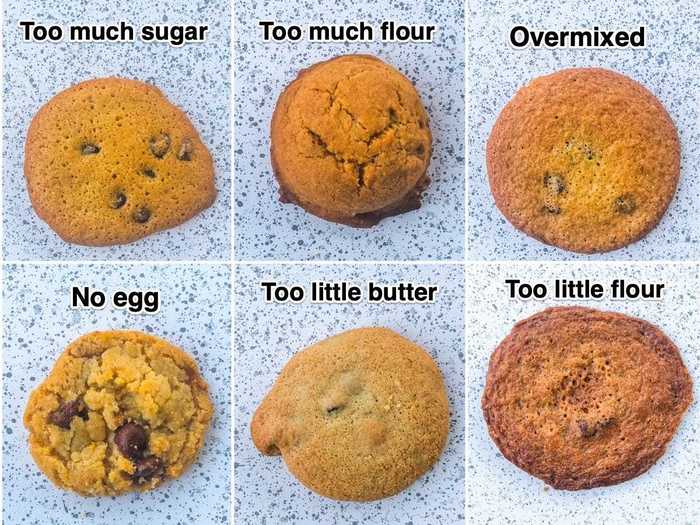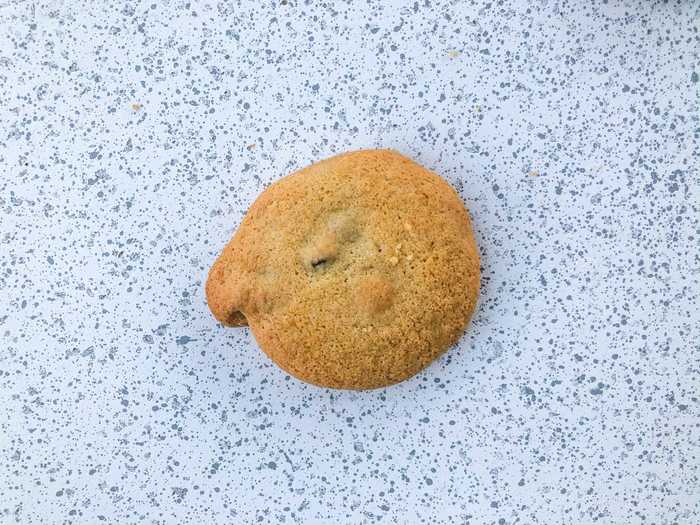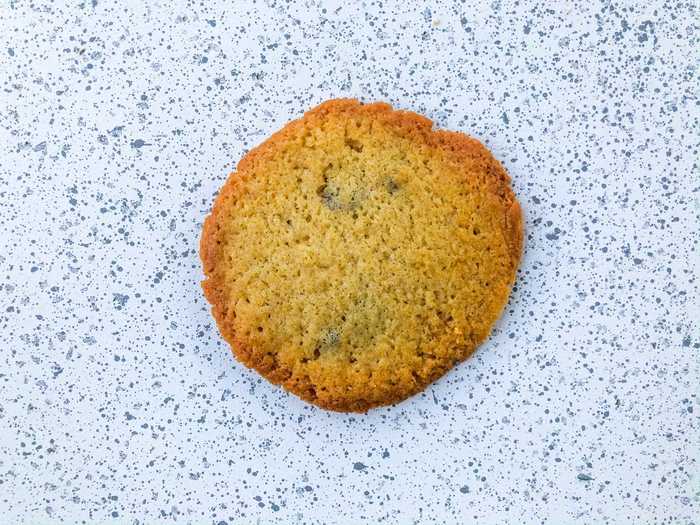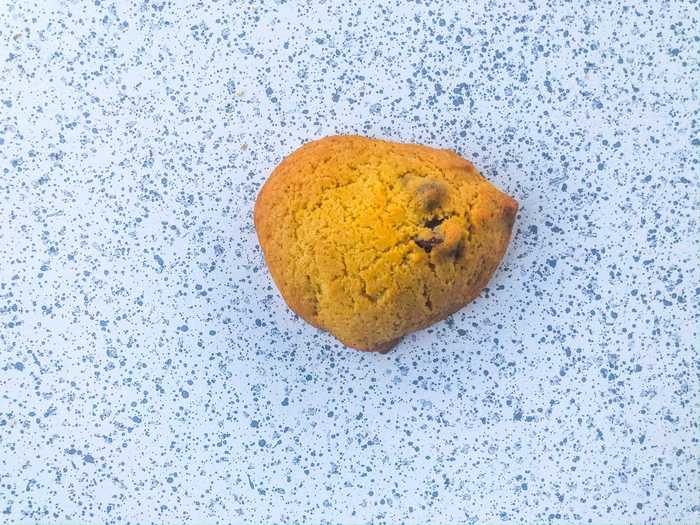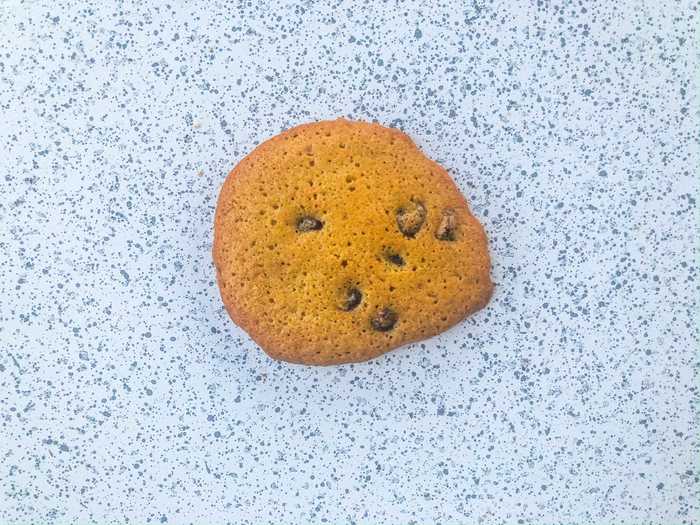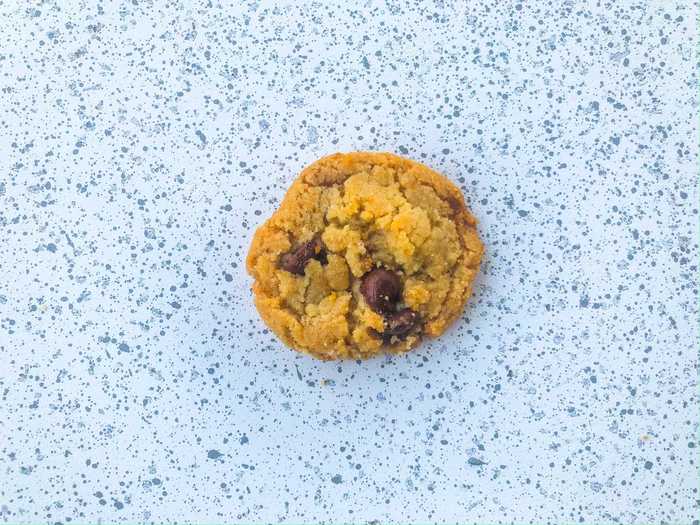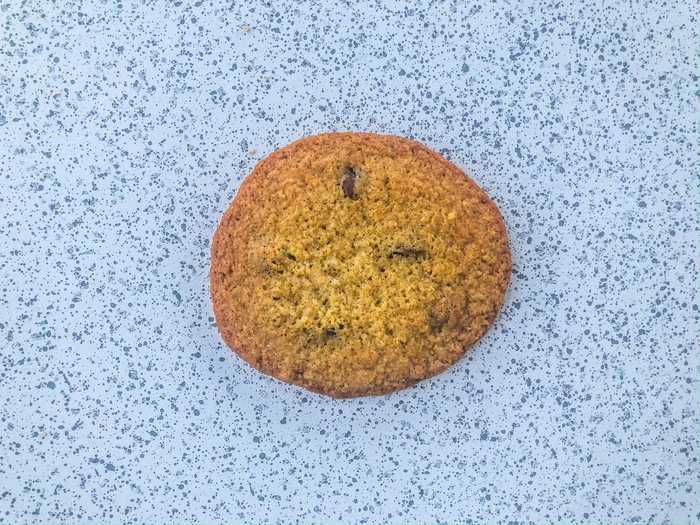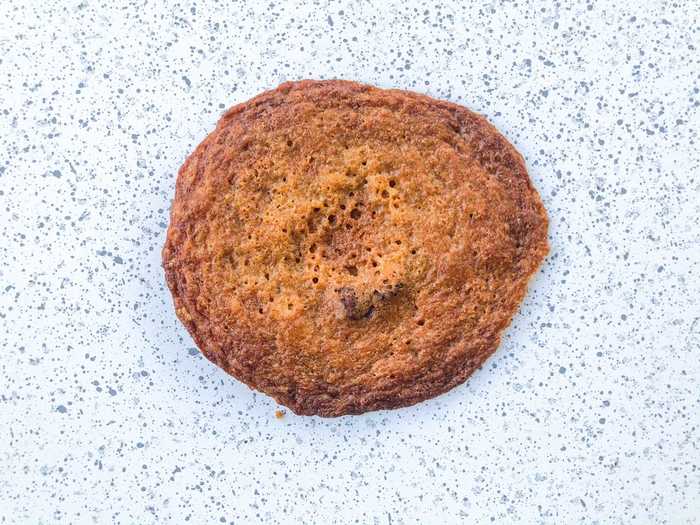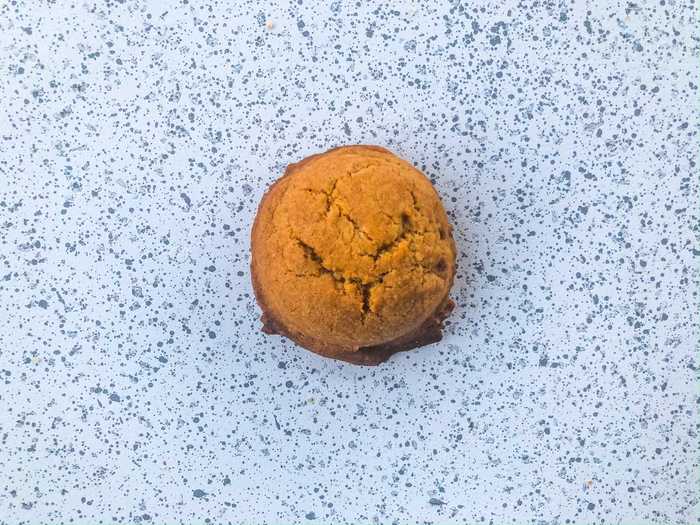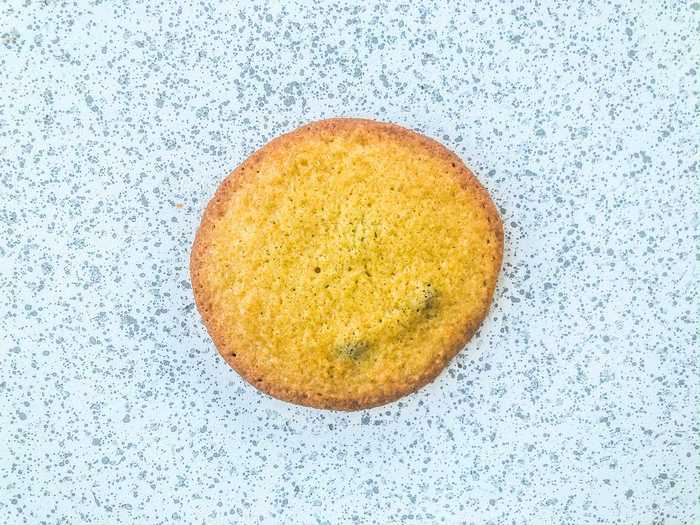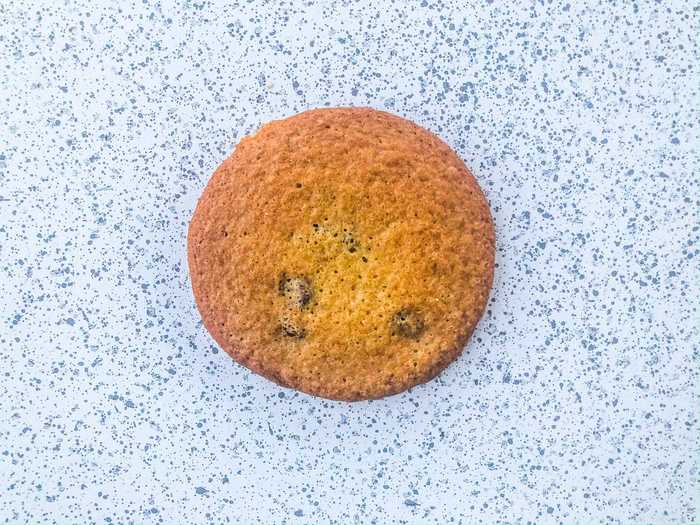These were all made by tweaking the same recipe.Rachel Askinasi/Insider
- I made common baking mistakes (on purpose!) as I was baking chocolate chip cookies to see how they would affect texture and taste.
- From measuring flour improperly to mistaking baking powder for baking soda, there is a lot that can go wrong.
- Leaving out flour resulted in a crispy cookie, and omitting eggs brought out the salt in the recipe I tried.
- Mixing all ingredients at once left lumps in the batter, and using baking powder made the cookie taste slightly artificial.
- Visit Insider's homepage for more stories.
I'm not a baker by any stretch of the imagination, and I often make mistakes with the simplest of recipes. I freestyle a lot while I'm cooking, but doing so with baked goods could result in a disaster.
In order to conquer my fear of baking, and as a long-time lover of chocolate chip cookies, I wanted to see what would happen if I made some common mistakes while making a batch from scratch.
To keep things even, I used the same recipe — the Nestlé Toll House chocolate chip cookie recipe right off my bag of chocolate chips — for my trial-and-error project.
From overmixing the batter to using too much flour, here's what happened when I made 10 classic mistakes while baking cookies.
Read the original article on
Insider
Just by slightly altering the same recipe, you can make tons of different types of cookies.
Rachel Askinasi/Insider
I thought it was interesting how even slightly changing the amount of flour I used could change my cookies so drastically. And I'm glad that I found my new favorite cookie (achieved by using a little less flour) through this experiment.
Some of these mistakes affected the cookies more than others, but let's be real — if offered, I wouldn't turn down any of them.
Using too little butter won't kill your cookies and they'll still be tasty, but it will make them lightweight.
A cookie with too little butter.
Rachel Askinasi/Insider
These cookies were most similar to the batch that included too much egg. These just puffed up differently; they had more of a muffin top.
This batch tasted really good, though. I was able to identify the vanilla and enjoyed the classic cookie flavor that comes with it.
It was a puffy cookie that felt really airy in my hand. The look of the bottom was the same as the cookie with too much egg, and looked more like a madeleine than a chocolate chip cookie on the bottom.
Too much butter makes cookies turn out just as you'd expect: very buttery.
A cookie with too much butter.
Rachel Askinasi/Insider
This batch of cookies was cakey in the middle, but also really airy throughout with crispy edges; they were yellow and slightly puffy in the middle, and brown and super thin around the perimeter.
Using too much butter obviously made the cookies buttery to the touch, and they were soft enough to crumble in my hands. The cookies melted apart in my mouth really quickly, too, and I could feel the air holes — which were prominent on the surface — on my tongue.
Leaving out most of the called-for sugar, my cookies seemed to grow upward instead of outward.
A cookie with too little sugar.
Rachel Askinasi/Insider
Not using enough sugar resulted in dry and bready cookies. They weren't chewy at all, and puffed upward in the center.
And though the flavor was good, I wasn't able to taste the vanilla as much as I could in the others. Both the texture and mouthfeel reminded me of a not-so-hard scone.
On the flip side, using too much egg also drastically changed the cookies and gave them a spongy, cake-like texture.
A cookie with too many eggs.
Rachel Askinasi/Insider
This batch was basically a tray of small cakes. To me, they looked and felt like madeleine cookies, even on the bottom.
There was barely any crust on the edges or even around the cookies; they were just spongy all over.
Leaving out eggs makes a huge difference to the texture and flavor, and results in a dry and salty cookie.
A cookie with no eggs.
Rachel Askinasi/Insider
These cookies were really crumbly and fell apart as I was loading the batter onto the baking sheet.
When I pulled them out of the oven, they had kind of melted out from the middle. Some actually looked quite beautiful and rustic.
They had a bite to them that was a little chewy but also dry. An interesting effect of leaving out eggs was the fact that I could taste the salt really prominently. These were the saltiest cookies by far, but I had included the same amount as I did in the other nine recipes.
Loading all ingredients in the bowl at once may cut down on time, but it compromises the texture of your cookies.
A cookie made by mixing all ingredients at once.
Rachel Askinasi/Insider
It turns out that there's a method to making cookies for a reason.
I tried dumping the flour, sugar, vanilla, salt, baking soda, egg, and butter into one single bowl, and then I mixed them all together. I thought the flavor was still good, but the texture was really weird.
There were air bubbles everywhere, and the cookies just weren't so pretty. They ended up being bumpy instead of cohesive, and it looked like there were tiny clumps of ingredients in them.
On the contrary, not using enough flour will make your cookies crisp and thin.
A cookie with too little flour.
Rachel Askinasi/Insider
The cookies wound up being nearly the size of my entire hand, and though their super-thin, brown appearance initially made me think I had burned them, they didn't taste burnt at all.
The entire cookie was crispy but the chips stayed intact. Biting into them, I found that this cookie didn't even stick to my teeth too much.
Ultimately, this method yielded my ideal cookie. If you're also a fan of a crispy cookie, this variation is for you.
Too much flour can result in cookies that look like scoops of ice cream.
A cookie with too much flour.
Rachel Askinasi/Insider
Packing flour — tapping the measuring cup on the counter or pushing the powder down with a spoon — will result in using too much. I added only a little bit more flour than I should have for this batch, and found they took slightly longer to bake.
After leaving them in the oven for around 10-and-a-half to 11 minutes (others cooked in nine minutes), they came out super fluffy, dry inside but not at all dense. They weren't cakey like the batch made with baking powder was.
In terms of taste, these maintained a solid cookie flavor and I was able to taste the vanilla and sugar.
It's easy to slip up and use baking powder instead of baking soda, but if you do, the chocolate chips will probably taste a little different.
A cookie with baking powder.
Rachel Askinasi/Insider
Using baking powder resulted in a chewy cookie — the kind of chewy where my teeth stuck together a little when I chomped down.
When it came to the look of this cookie, there was a dark ring around the outside but most of it was a light tan color.
This batch was cakier than the first ones, and the chocolate had an almost chemical-like taste that gave the cookie a slightly artificial flavor.
The cookies weren't bad, but they weren't as enjoyable as the other batches. So, if you make this mistake, know that it's OK — they won't be the best cookies you've ever made, but they also won't be the worst.
Overmixing your batter can lead to runny cookies.
A cookie with overmixed batter.
Rachel Askinasi/Insider
Overmixing — or over-creaming in baking-speak — the batter resulted in a runnier texture. The fluidity made for a cookie that baked quickly and also spread out more widely than a properly-creamed batter usually would.
You could overmix the batter at any point, but over-creaming specifically occurs when you're combining the butter, sugar, and vanilla. I mixed the batter more than I should have both during the creaming stage of the recipe, and after adding the flour.
As a result, the cookies came out light and airy, and I was able to taste the butter more prominently in this batch than in others. They turned a nice, even, brown color.

